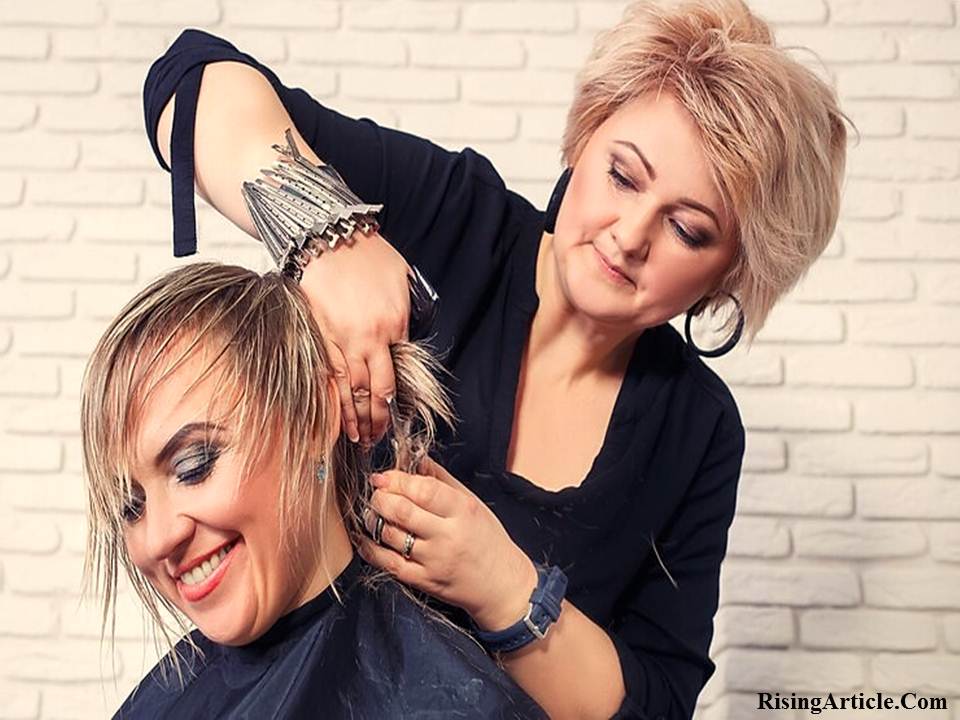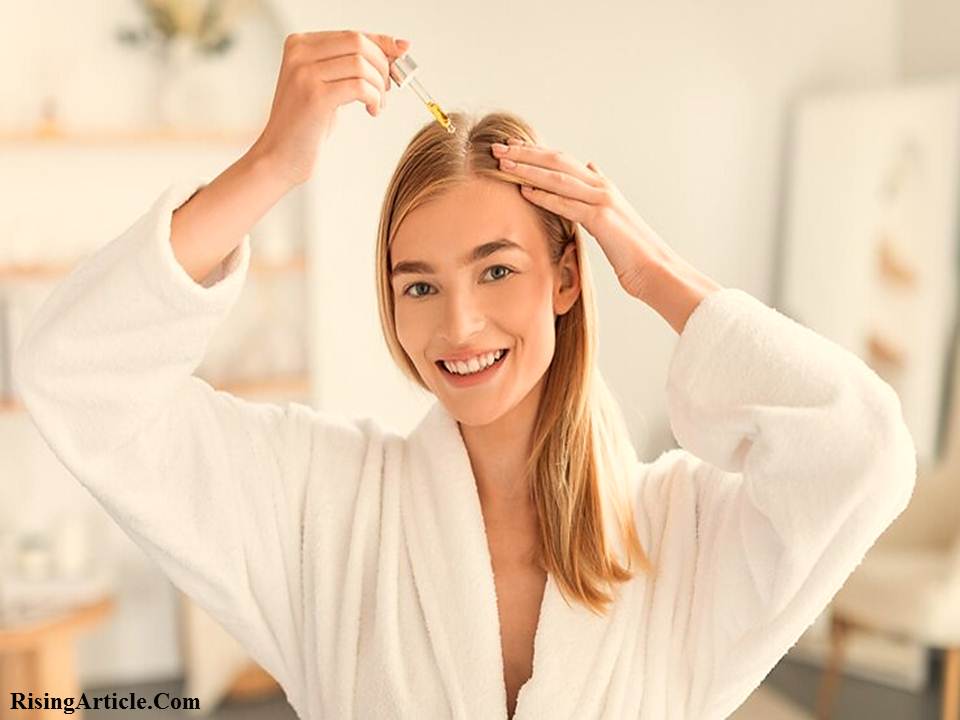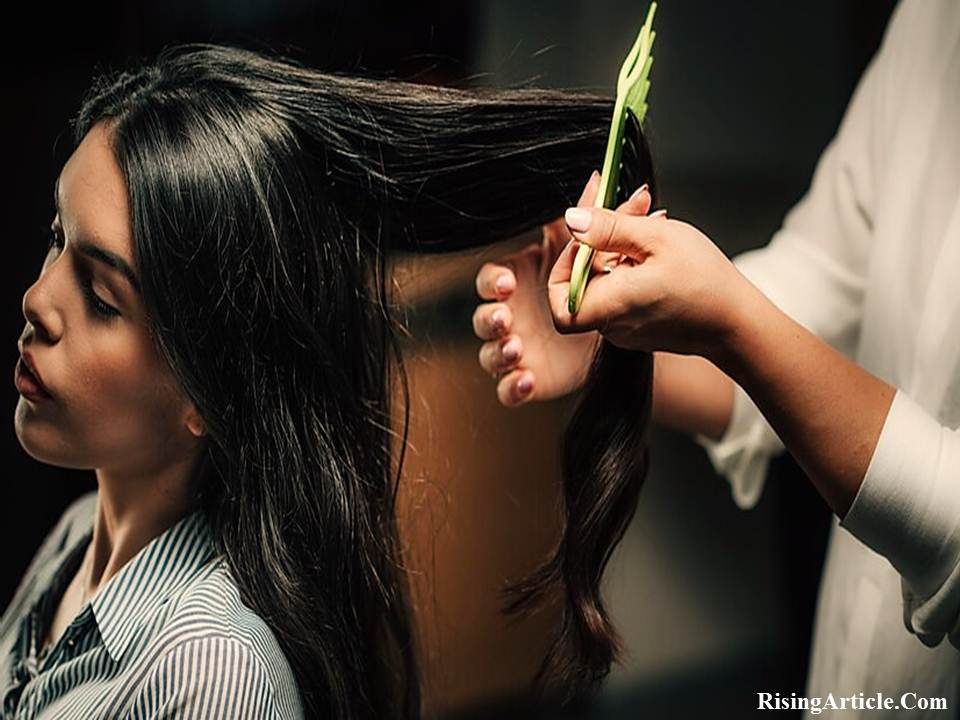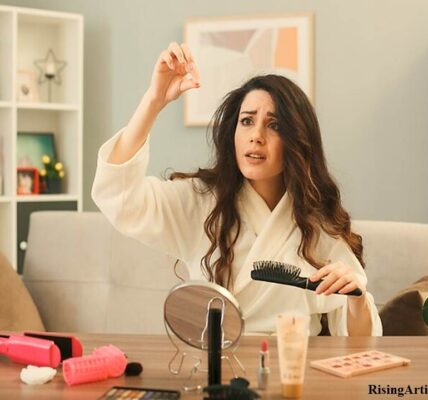Female pattern baldness, which is also known as androgenetic alopecia, is a common condition that is characterized by gradual hair loss and thinning in a specific pattern. This condition is also known as androgenetic alopecia. Despite the fact that it might not be as obvious as male pattern baldness, it can still have a significant impact on a woman’s self-esteem and confidence. The good news is that there are a number of treatments and interventions available to address female pattern baldness. These treatments and interventions range from topical medications to surgical procedures. In this all-encompassing guide, the best treatment options that are currently available for women who are experiencing this condition are discussed.
Understanding Female Pattern Baldness
 Women who have pattern baldness experience a gradual loss of hair on the crown of the head and an increase in the breadth of the portion line. This condition is characterized by a gradual loss of hair. As opposed to male pattern baldness, which frequently results in complete baldness, female pattern baldness typically expresses itself as widespread hair thinning across the scalp. This is in contrast to the fact that male pattern baldness frequently results in complete baldness. The development of the illness is influenced by a number of factors, including but not limited to genetics, hormonal imbalances, the effects of ageing, and other factors.
Women who have pattern baldness experience a gradual loss of hair on the crown of the head and an increase in the breadth of the portion line. This condition is characterized by a gradual loss of hair. As opposed to male pattern baldness, which frequently results in complete baldness, female pattern baldness typically expresses itself as widespread hair thinning across the scalp. This is in contrast to the fact that male pattern baldness frequently results in complete baldness. The development of the illness is influenced by a number of factors, including but not limited to genetics, hormonal imbalances, the effects of ageing, and other factors.
Best Treatments for Female Pattern Baldness
Topical Minoxidil (Rogaine)
 A topical medicine known as minoxidil has been approved by the Food and Drug Administration (FDA) for the treatment of female pattern baldness. This approval was provided for the specific purpose of treating the condition. This is accomplished by increasing the quantity of blood that flows to the scalp and by stimulating the hair follicles, which in turn is responsible for boosting the growth of hair and increasing its thickness. In addition, it is responsible for enhancing the thickness of the hair. Minoxidil is available for purchase in a wide range of dosages and forms, including foam and solution, and does not require a prescription to be obtained. Purchasing these things is an option that is accessible.
A topical medicine known as minoxidil has been approved by the Food and Drug Administration (FDA) for the treatment of female pattern baldness. This approval was provided for the specific purpose of treating the condition. This is accomplished by increasing the quantity of blood that flows to the scalp and by stimulating the hair follicles, which in turn is responsible for boosting the growth of hair and increasing its thickness. In addition, it is responsible for enhancing the thickness of the hair. Minoxidil is available for purchase in a wide range of dosages and forms, including foam and solution, and does not require a prescription to be obtained. Purchasing these things is an option that is accessible.
Oral Medications
Finasteride (Propecia)
Finasteride is a medication that prevents the conversion of testosterone into a hormone known as dihydrotestosterone (DHT), which is associated with hair loss. Finasteride is used to treat hair loss. Finasteride is traditionally prescribed for the treatment of male pattern baldness; nevertheless, there are some women who may benefit from its use. In spite of this, the Food and Drug Administration has not yet granted its permission for the use of finasteride in women of reproductive age due to the potential risks that it poses during pregnancy.
Spironolactone
Spironolactone is a medicinal chemical that is widely used for the aim of treating hormonal imbalances and illnesses such as polycystic ovarian syndrome (PCOS). Spironolactone is considered to be an effective treatment for these conditions. This drug has the potential to reduce the negative effects that androgens have on hair follicles. Additionally, it has the potential to slow down the pace of hair loss in women who suffer from female pattern baldness who are experiencing hair loss.
Platelet-Rich Plasma (PRP) Therapy
 Platelet-rich plasma therapy, more commonly referred to as PRP, is a treatment that includes injecting the scalp with concentrated platelets that have been extracted from the patient’s blood. Platelets contain a high concentration of growth factors, which enables them to stimulate hair follicles, encouraging the production of new hair, and resulting in an increase in the thickness of the hair that is already present.
Platelet-rich plasma therapy, more commonly referred to as PRP, is a treatment that includes injecting the scalp with concentrated platelets that have been extracted from the patient’s blood. Platelets contain a high concentration of growth factors, which enables them to stimulate hair follicles, encouraging the production of new hair, and resulting in an increase in the thickness of the hair that is already present.
Platelets are also responsible for the promotion of the growth of new hair. One of the potential treatment options that may be explored for female pattern baldness is platelet-rich plasma therapy (PRP), which is a process that is minimally invasive and involves a short period of recovery time. PRP is also one of the potential treatment choices that might be examined.
Low-Level Laser Therapy (LLLT)
Low-level laser therapy (LLLT) devices emit low-level laser light that is able to enter the scalp and stimulate hair follicles. This allows the devices to stimulate hair follicles, which in turn promotes hair growth. Low-level laser treatment (LLLT) can be administered in clinical settings or at home using handheld devices. Both clinical and home settings are viable options. It has been demonstrated that participants who undergo low-level laser therapy (LLLT) on a consistent basis see an increase in their hair density and thickness. However, the results may differ from person to person.
Hair Transplantation
 In some cases of severe female pattern baldness, where nonsurgical treatments have been shown to be ineffective, hair transplantation is an alternative that may be examined as a potential therapeutic option. The therapy entails the removal of hair follicles from donor areas of the scalp, followed by the transplantation of those hair follicles into areas of the scalp that are balding or experiencing hair loss. By using techniques that are deemed to be more advanced, such as follicular unit extraction (FUE), it is possible to achieve results that look natural and leave minimum scarring.
In some cases of severe female pattern baldness, where nonsurgical treatments have been shown to be ineffective, hair transplantation is an alternative that may be examined as a potential therapeutic option. The therapy entails the removal of hair follicles from donor areas of the scalp, followed by the transplantation of those hair follicles into areas of the scalp that are balding or experiencing hair loss. By using techniques that are deemed to be more advanced, such as follicular unit extraction (FUE), it is possible to achieve results that look natural and leave minimum scarring.
Scalp Micropigmentation (SMP)
SMP, which is an abbreviation that stands for scalp micropigmentation, is a non-surgical process that includes tattooing pigment onto the scalp in order to achieve the appearance of thicker hair. It is possible for SMP to conceal areas of thinning or baldness and provide the impression of thicker hair that does not actually exist. This is accomplished using certain techniques. Despite the fact that SMP does not encourage the growth of new hair, this is the current state of affairs.
Conclusion:
Women are able to properly address hair loss and regain confidence in their looks if they are provided with the suitable treatment procedure. Managing female pattern baldness can be a challenging disease, but it is possible for women to restore confidence in their appearance after experiencing this ailment. When it comes to women who are experiencing female pattern baldness, it is extremely vital for them to speak with a dermatologist or a hair restoration professional. This consultation is essential in order to determine the underlying cause of hair loss and to devise a treatment strategy that is individualized to the specific needs of the individual under consideration.
In order to assist women in treating female pattern baldness and getting thicker, healthier-looking hair, there are methods that are both viable and available. Taking topical medications, performing minimally invasive procedures such as platelet-rich plasma therapy or low-level laser therapy (LLLT), or undertaking surgical operations such as hair transplantation are some of the alternatives that are available to you. It is possible for women to effectively navigate the process of hair loss and embrace their natural beauty with newfound vigor if they put in the effort to be patient, diligent, and seek the assistance of a specialist.
Read More Article:
- 10 Exercises to Tone Every Inch of Your Body
- 10 Yoga Balance Poses to Keep You on Your Toes
- 15 Forearm Exercises to Do at the Gym or at Home
- 15 Proven Tips for Maximum Muscle Recovery and Growth
- 20 Shoulder Exercises for Sculpted Strong Biceps




